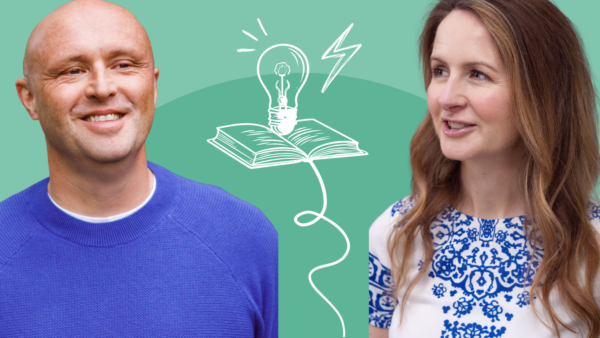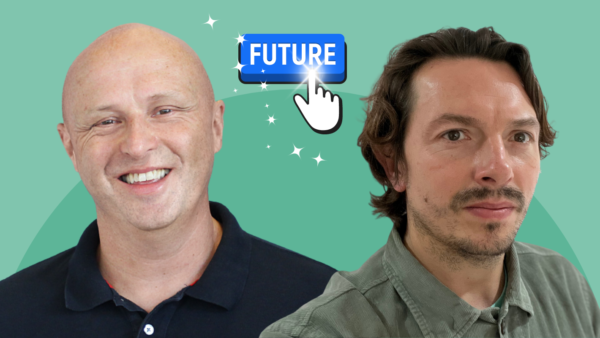In my work with leaders and managers, there is one word that is presented more often than any other as an area for improvement: both by the leaders themselves and by their bosses: gravitas. It’s a word that is rarely well-defined, and which is therefore very hard to measure objectively, and it seems to be used as an umbrella term for ‘not having enough of an impact, or enough credibility, which is limiting career-wise’. And up it comes again and again and again. What I want to do in today’s podcast is to try and define gravitas, and how it can best be developed, so that you can be more impactful and more credible whoever it is you’re working with.
I’m Dr Paul Brewerton, the strengths guy, and my podcasts focus on life, work and strengths, dropping every Monday to set you up for the week ahead. Today’s podcast focuses on work and also on strengths as in my view, knowing and using your strengths effectively, is one of the cornerstones to developing gravitas.
What does gravitas mean?
So of the people I’ve worked with who have identified (or their boss has identified) a need for them to develop more gravitas, I would say that while they’ve all been different, mostly these people have reached a point in their career where they’re not moving to the next role as quickly as they’d like, or they’re struggling with confidence once they have made the move to the next level or the next role. Like they haven’t quite grown into their own skin yet at this point of change and so aren’t being taken as seriously or adding as much value as they’d like or other important people around them would like.
So this gravitas definition seems to be about being noticed for the right reasons, taken seriously, being seen to be offering up valuable ideas and opinions, being listened to and people seeking them out for what they think and know. And like I say people who I have met who are finding developing gravitas a challenge are in the process of moving on in their careers or have just moved to a new role – so they’re at a point of change, of uncertainty – and this has somehow in most cases affected their confidence that they are adding value, that they can cut it in the new world.
 There’s a view sometimes that gravitas is something that happens automatically as you get more senior in your role or career. But some research recently carried out by a good friend of mine – Dr Rebecca Newton at LSE – shows that gravitas doesn’t seem to be related to seniority of role at all.
There’s a view sometimes that gravitas is something that happens automatically as you get more senior in your role or career. But some research recently carried out by a good friend of mine – Dr Rebecca Newton at LSE – shows that gravitas doesn’t seem to be related to seniority of role at all.
So people seen to be credible, to have gravitas, can be in roles at any level and in any part of an organisation.
By the way, I would strongly recommend looking out for the book that Bec Newton has written on the topic based on this research and her experience of working with execs – it’s called Authentic Gravitas and it’s due for publication early April 2019. And I’m recommending it because I’ve had the privilege of reading it pre-publication and it’s good.
So if gravitas isn’t to do with seniority, what is it to do with? Well for me (and also what’s covered in Bec’s book), firstly it comes down to what’s inside – whether you truly value what it is you can offer. And secondly, how you present that to the outside world – are you doing that in a way that others can understand and find useful?
Developing gravitas
Let’s now take the first of those two things: how can you build confidence that what you can offer is valuable?
So I would start by working out how you are different – what are your skills and strengths? What comes naturally to you that doesn’t seem to be so easy for others? What are you known for? Ask others what they find valuable about what you bring to a situation. Also, get clear on what’s important to you – what do you value, what are you passionate about? Because that can clearly show when you are putting across a point of view…so it feeds directly in to whether you are someone who is seen as naturally, authentically credible or having gravitas, without you having to feel that you’re playing a role or not quite being yourself.
 All this information – your strengths, skills and values – is central to you building your brand (I’ve put up two podcasts on the details of how to do this at Season 1, Episodes 11 and 12). And that helps with building confidence in who you are and what you bring.
All this information – your strengths, skills and values – is central to you building your brand (I’ve put up two podcasts on the details of how to do this at Season 1, Episodes 11 and 12). And that helps with building confidence in who you are and what you bring.
In doing this personally, I worked up my own brand pyramid with values at the base, which for me include Responsibility, Openness, Fun, Freedom, Inclusion.
Then my strengths and skills – what I want to bring to any situation; these include Collaboration, Optimism, Energy, Insight, Evidence, Belief in your potential.
And then some words on how I want to make a difference: leaving a stronger, more positive world.
And going through this process of building and refining your brand (how I want to be seen, what I want to be valued for) at different times in my life has really helped ground me again, made me feel confident that I can get through whatever challenge is in front of me and that I know what my direction is, where I’m headed, what I’m for.
So to be credible, to show gravitas, in my view you need to understand your positive differences, how you make an impact and what you’re valued for and then for you to start to genuinely value those differences that you bring, take people’s positive feedback seriously and start to believe inwardly that you can bring value to a room full of professionals. Of course, this takes time and focus it’s difficult and at times it can feel uncomfortable, but it is one of the two key components to building gravitas.
The second element is how you present yourself to the outside world – how you can show that your knowledge and skills and strengths are useful and valuable to others?
 So this involves really getting to know you in a social context and how you can present yourself best to other people, whether it’s one to one or to a group.
So this involves really getting to know you in a social context and how you can present yourself best to other people, whether it’s one to one or to a group.
And learning how to manage your impact – see you how others see you, you can do this by getting feedback from others on how useful your contributions were at a meeting and how you could improve your impact next time. But it does require you to take risks, to put your thoughts and views forward in a way which is clear, thought through, relevant, organised.
And that may not be perfect each time but it’s only by taking a risk that you can give it a go and learn from the experience. If you sit back passively and contribute nothing, even if you’re in broad agreement with everything that is being said, believe me, you will not be seen as having credibility or gravitas.
To maximise this impact, you need to get good at reading people, reading situations, reading a room, and working out how you can use your skills and strengths and knowledge best in that context.
Ultimately though, once you’ve done enough work on you to be clear on your brand and how you can add value, you need to GO FOR IT! This is about taking a risk and offering your view because you believe it is of value. That will get you noticed for the right reasons and will start you towards being seen as someone with gravitas.
So in summary, to be seen as credible, to be seen as having gravitas, you need to work on two things:
1. know and value the unique contribution you can make and
2. learn how to make that contribution clearly, positively and at the right time to create the greatest value for a meeting, or person, or group.
And bear in mind, this is a lifelong journey, so if you haven’t already started, it’s best to start soon. Or now.
If you want to read and see more on developing gravitas and credibility, you can speak to the amazing team here at Strengthscope, or check this page out here first.
Did you know this blog is also available as a podcast along with some other incredible content? Check it out on iTunes, Spotify, Acast.












